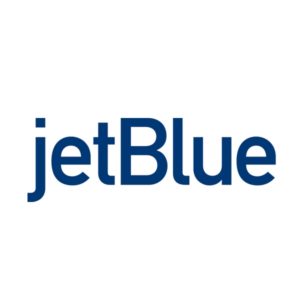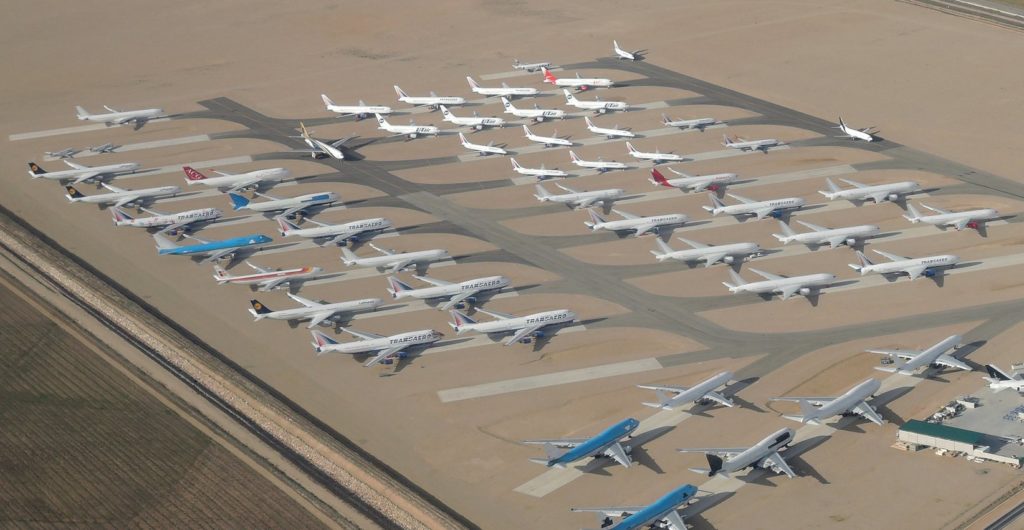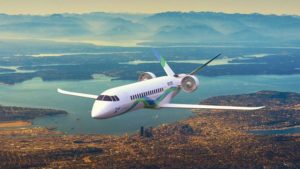Leeham News and Analysis
There's more to real news than a news release.
Boeing suspends production of wide-bodies
March 23, 2020, (c) Leeham News: Boeing today announced it will suspend production of its wide-bodies for 14 days, beginning Wednesday. 
Production slowdown begins today.
The move is in response to the COVID-19 crisis. Boeing is the last of the Big Three aircraft manufacturers to do so. Airbus last week suspended production in France and Germany, restarting slowly today. Embraer suspended production last week.
European airline struggles add risk to 15% of Airbus, Boeing orders
By Judson Rollins
Subscription Required
Introduction
Earlier this week, LNA examined the potential for a shakeout among European carriers as the coronavirus outbreak spreads to the continent.
Five European countries now rank among the ten hardest hit – travel demand is plummeting nearly as rapidly as after the September 11 attacks in the US.
On Thursday, UK-based Flybe went into bankruptcy after long-time financial struggles. The airline had 54 De Havilland Canada Dash-8-400s and nine Embraer E175-E1s in its fleet, more than half of which were leased from Nordic Aviation Capital and HEH Aviation Management.
LNA reviewed aircraft ownership data to understand top manufacturer and lessor exposure to European carriers, particularly those with known profitability issues and high debt loads.
Summary
- Airbus’s exposure to Europe is 16% on single-aisles and 19% on twin-aisles;
- Boeing has just under 15% of its single- and twin-aisle orders from Europe;
- Embraer’s E2 jet program has 27% exposure to the region;
- ATR, De Havilland Canada, COMAC face little to no threat from European airline woes;
- Norwegian, TAP, SAS, TUI are likely the most imminent threats to manufacturers and lessors.
An upcoming shakeup in European skies
By Vincent Valery
Introduction
Mar. 3, 2020, © Leeham News: After the 2012-2014 European sovereign debt crisis, passenger traffic grew briskly in Europe. The expansion of low-cost airlines, combined with increasing passenger traffic from Asia, contributed to this passenger boom on the old continent.
Despite the passenger traffic boom, the last few years have been challenging for most European airlines. Apart from a few notable exceptions, profitability is materially lower than at US carriers. There were several high-profile bankruptcies, notably Air Berlin, Alitalia, and Monarch, in 2017, followed by Thomas Cook last year.
LNA wrote a series last year on the struggling European carriers.
After starting in mainland China, there have been significant COVID-19 outbreaks in South Korea, Iran, and Italy. The number of diagnosed cases is increasing rapidly around the world, and notably in Europe.
Until two weeks ago, European airlines canceled most of their services to mainland China and reduced frequencies to other Asian destinations. However, with the outbreak intensifying in Europe, numerous carriers took emergency measures to reduce service on intra-Europe services.
European airlines are facing the COVID-19 disruptions with weakened balance sheets. To make matters worse, they have become the target of numerous environmental groups in Western Europe. The ongoing slump in passenger traffic will stretch some carriers’ finances beyond recovery. The much-discussed consolidation wave seems a matter of when, not if.
The financial challenges will undoubtedly affect OEMs, notably Airbus and Boeing.
In this article, LNA lists the scheduled OEM deliveries in countries affected by the COVID-19 outbreak, then assesses the financial vulnerability of major European airline groups.
Summary
- A global COVID-19 outbreak;
- Emergency airline measures to reduce capacity;
- Almost all OEM 2020 scheduled deliveries affected;
- Financial vulnerability at European airlines.
Asian airline troubles could affect up to 20% of Airbus, Boeing backlogs
By Judson Rollins
Subscription Required
In last week’s analysis, LNA examined which airlines in greater China and the rest of Asia may be in imminent risk of financial distress due to the growing coronavirus outbreak. We found that airlines from Malaysia to Japan have significant exposure to the Chinese market. Several have shaky balance sheets and were already losing money prior to the outbreak, most notably AirAsia, AirAsiaX, Thai Airways, Nok Air, Malaysia Airlines, and Asiana.
The coronavirus outbreak has now spread to Europe and the Middle East, but we are continuing our focus on Asia as it’s been most greatly affected so far. Additional analysis focusing on Europe will follow, with particular attention to the potential for further airline consolidation on the continent.
LNA reviewed ownership and operating data on aircraft to understand top manufacturer and lessor exposure to greater China, which includes Hong Kong and Macau, and the rest of East Asia.
Summary
- Airbus has greater exposure to China and the rest of East Asia, especially in widebodies;
- Boeing’s 787, 777X difficulties will be exacerbated by Asian airline troubles;
- COMAC’s sales book is almost exclusively in China, but government support is likely;
- ATR has material exposure to Southeast Asia; other regional aircraft OEMs are largely unaffected.
Pontifications: Boeing’s alphabet soup of airplanes and more
- It’s time for catching up on Odds and Ends.
By Scott Hamilton
March 2, 2020, © Leeham News: NMA. NSA (version 1). NSA (version 2). NLT. FSA. MOM.
These are Boeing’s acronyms for its next airplane. Whatever it will be.
NMA stands for New Midmarket Airplane.
NSA version 1 stood for New Single Aisle Airplane. It was replaced by version 2, New Small Airplane. This was replaced by FSA, Future Small Airplane. Some called this the Future Single Aisle airplane.
Then there is NLT, New Light Twin, from 2011. Which really begot the NMA, which was initially the MOM, or Middle of the Market Airplane. We called it MOMA at times.
It’s all very confusing. The Next Boeing Airplane is such a moving target. Maybe it should be called the NBA, although some association involving basketball might object. (The Next Airbus Airplane logically would become the NAA.)
Then there is the next new airplane from Embraer, after its joint venture with Boeing is finally approved (as I believe it will be).
Embraer CEO John Slattery want to do a turboprop. So does this become the E3TP?
The JV agreement calls for Embraer (to be named Boeing Brasil-Commercial) to do the next jet in the 100-150 seat category. Does this become the E3150, E3JET, BBCX or something else?
Pontifications: EU appears to be holding Boeing-Embraer JV hostage
Feb. 24, 2020, © Leeham News: I bet you’d never get an official of the European Union to go on the record.
But there sure seems to be plenty of anecdotal evidence that the approval of the proposed Boeing-Embraer joint venture is being held hostage.
The EU is plenty vocal about being pissed at the Trump Administration’s trade war against Europe. It’s also unhappy with Trump’s tariffs on Airbus jets imported into the US.
Trump initially levied a 10% tax on the planes, last October. Next month, this goes up to 15%.
As of last week, the US collected more than $277m in tariffs related to the Airbus complaint. The Trump Administration has WTO authority to levy 100% taxes, up to $7.5bn. Industries and countries that have nothing to do with aerospace are penalized in addition to Airbus.
It’s unclear from public information how much of the money collected so far is from Airbus imports.
JetBlue, a carrier at crossroads
Subscription Required
By Vincent Valery
Introduction
Feb. 17, 2020, © Leeham News: JetBlue Airways has come a long way since it started operations in 2000. The airline celebrated its 20th-anniversary last week.
While the US legacy carriers were struggling financially and busy with consolidation, the airline successively expanded. It now generates more revenue than numerous flag carriers around the world.
JetBlue built significant focus city operations outside its main New York–JFK base in Boston, Fort Lauderdale, and Orlando. The carrier profitably grew faster than most competitors in the years after the financial crisis. It also announced the start of trans-Atlantic operations from next year.
The airline has had some resounding successes over the years, notably the introduction of Mint service on US transcontinental flights. However, there have also been strategic failures.
After resisting the usage of ancillary fees, the carrier is aggressively increasing those revenues. Management announced in 2018 a shift towards expanding capacity in the focus cities where the airline has a significant market share.
LNA analyzes JetBlue’s performance over the years and the rationale behind the latest strategic decisions.
Summary
- Succeeding where many others failed;
- Some resounding successes;
- And strategic failures;
- Increasingly looking like a legacy carrier;
- Setting itself up for a merger?
Mitsubishi ends 2019 with ~500 commitments for SpaceJet
By Scott Hamilton
Jan. 22, 2020, © Leeham News: Mitsubishi Aircraft Corp. (MITAC) ended 2019 with 495 commitments for the M100 SpaceJets from multiple continents, LNA learned.
All but 100 from US regional carrier Mesa Airlines are unidentified.
 Mesa announced a commitment for 50 firm orders and 50 options in September at the US Regional Airline Assn. annual meeting in Nashville.
Mesa announced a commitment for 50 firm orders and 50 options in September at the US Regional Airline Assn. annual meeting in Nashville.
MITAC wouldn’t comment, but LNA understands that commitments come from North America and Europe. It’s unclear if additional commitments are from Asia.
Japan’s ANA and Japan Air Lines are launch customers for the M90 SpaceJet, previously called the MRJ90. This model was rebranded in June at the Paris Air Show when the M100 SpaceJet program was launched.
Environment and aviation, a gap between aspirations and reality
Subscription Required
By Vincent Valery
Introduction
Jan. 20, 2020, © Leeham News: Talks about climate change and the need to reduce human-induced carbon emissions are nowadays a daily occurrence in Western media. After years of faster-than-trend growth in global passenger numbers, aviation-induced carbon emissions commensurably increased in spite of record deliveries in latest-generation, fuel-efficient planes.
As a result of this growth, airlines have been one of the main targets of environmental groups. The high growth culminated in the start of the flight-shame movement that originated in Sweden (flygskam). As outlined in a previous LNA article, there are discussions about introducing a jet fuel tax for all flights within the European Union.
Airbus is committed to the “decarbonization” of its next airplane design.
Boeing’s next move for a new airplane has been sidetracked by the 737 MAX crisis.
Embraer is devoting considerable effort to developing a “green” airplane.
Summary
- Airlines and politicians on the back foot;
- Variety of opinion among regions;
- And airlines make consensus-building hard;
- An obsession with one way to reduce emissions;
- Flybe’s bailout summarizes contradictions and challenges.





